XCZU47DR-1FFVG1517E
- Part Number: XCZU47DR-1FFVG1517E
- Categories:
- Manufacturer: Xilinx
- MOQ: 1PCS
- In Stock: 5000
- Datasheet:
- Description: IC ZUP RFSOC A53 FPGA 1517BGA
- Payment method: Paypal/Wire transfer/Visa
- Delivery Method: UPS/DHL/FEDEX/EMS
| Manufacturer | Xilinx |
| Speed | 500MHz, 1.2GHz |
| RAM Size | 256kB |
| Flash Size | - |
| Peripherals | DMA, WDT |
| Architecture | MCU, FPGA |
| Connectivity | CANbus, EBI/EMI, Ethernet, I²C, MMC/SD/SDIO, SPI, UART/USART, USB OTG |
| Core Processor | Quad ARM® Cortex®-A53 MPCore™ with CoreSight™, Dual ARM®Cortex™-R5 with CoreSight™ |
| Package / Case | 1517-BBGA, FCBGA |
| Product Status | Active |
| Primary Attributes | Zynq®UltraScale+™ FPGA, 930K+ Logic Cells |
| Operating Temperature | 0°C ~ 100°C (TJ) |
| Supplier Device Package | 1517-FCBGA (40x40) |
XCZU47DR-1FFVG1517E FPGAs Overview
The XCZU47DR-1FFVG1517E of Zynq UltraScale+ RFSoC family integrates key subsystems for multiband, multi-mode cellular radios and cable infrastructure (DOCSIS) into an SoC platform that contains a feature-rich 64-bit quad-core Arm Cortex-A53 and dual-core Arm Cortex-R5 based processing system.
Combining the processing system with UltraScale architecture programmable logic and RF-ADCs, RF-DACs, and soft-decision FECs, the Zynq UltraScale+ RFSoC family is capable of implementing a complete software-defined radio including direct RF sampling data converters, enabling CPRI and gigabit Ethernet-to-RF on a single, highly programmable SoC.
The XCZU47DR-1FFVG1517E of Three generations of Zynq UltraScale+ RFSoCs integrate up to 16 channels of RF-ADCs and RF-DACs, all with excellent noise spectral density. The RF data converters also include power efficient digital down converters (DDCs) and digital up converters (DUCs) that include programmable interpolation and decimation, NCO, and complex mixer. The DDCs and DUCs can also support dual-band operation. See Table 1 for key features and sample rates.
Features
RF Data Converter Subsystem Overview
Most Zynq UltraScale+ RFSoCs include an RF data converter subsystem, which contains multiple radio
frequency analog to digital converters (RF-ADCs) and multiple radio frequency digital to analog
converters (RF-DACs). The high-precision, high-speed, power efficient RF-ADCs and RF-DACs can be
individually configured for real data or can be configured in pairs for real and imaginary I/Q data.
Soft Decision Forward Error Correction (SD-FEC) Overview
Some Zynq UltraScale+ RFSoCs include highly flexible soft-decision FEC blocks for decoding and encoding
data as a means to control errors in data transmission over unreliable or noisy communication channels.
The SD-FEC blocks support low-density parity check (LDPC) decode/encode and Turbo decode for use in
5G wireless, backhaul, DOCSIS, and LTE applications.
Processing System Overview
Zynq UltraScale+ RFSoCs feature a quad-core Arm Cortex-A53 (APU) with a dual-core Arm Cortex-R5
(RPU) processing system (PS).
To support the processors' functionality, a number of peripherals with dedicated functions are included in
the PS. For interfacing to external memories for data or configuration storage, the PS includes a
multi-protocol dynamic memory controller, a DMA controller, a NAND controller, an SD/eMMC controller
and a Quad SPI controller. In addition to interfacing to external memories, the APU also includes a Level-1
(L1) and Level-2 (L2) cache hierarchy; the RPU includes an L1 cache and Tightly Coupled memory
subsystem. Each has access to a 256KB on-chip memory.
For high-speed interfacing, the PS includes 4 channels of transmit (TX) and receive (RX) pairs of
transceivers, called PS-GTR transceivers, supporting data rates of up to 6.0Gb/s. These transceivers can interface to the high-speed peripheral blocks that support PCIe at 5.0GT/s (Gen2) as a root complex or
Endpoint in x1, x2, or x4 configurations; Serial-ATA (SATA) at 1.5Gb/s, 3.0Gb/s, or 6.0Gb/s data rates; and
up to two lanes of DisplayPort at 1.62Gb/s, 2.7Gb/s, or 5.4Gb/s data rates. The PS-GTR transceivers can
also interface to components over USB 3.0 and Serial Gigabit Media Independent Interface (SGMII).
For general connectivity, the PS includes: a pair of USB 2.0 controllers, which can be configured as host,
device, or On-The-Go (OTG); an I2C controller; a UART; and a CAN2.0B controller that conforms to
ISO11898-1. There are also four triple speed Ethernet MACs and 128 bits of GPIO, of which 78 bits are
available through the MIO and 96 through the EMIO.
High-bandwidth connectivity based on the Arm AMBA AXI4 protocol connects the processing units with
the peripherals and provides interface between the PS and the programmable logic (PL).
I/O, Transceiver, PCIe, 100G Ethernet, and 150G Interlaken
Data is transported on and off chip through a combination of the high-performance parallel SelectIO
interface and high-speed serial transceiver connectivity. I/O blocks provide support for cutting-edge
memory interface and network protocols through flexible I/O standard and voltage support. The serial
transceivers in the UltraScale architecture-based devices transfer data up to 28.21Gb/s, enabling 25G+
backplane designs with dramatically lower power per bit than previous generation transceivers. All
transceivers, except the PS-GTR, support the required data rates for 8.0GT/s (Gen3) and 16.0GT/s (Gen4)
for PCIe. The integrated blocks for PCIe can be configured as either Endpoint or Root Port, supporting a
variety of link widths and speeds depending on the targeted device speed grade and package. Integrated
blocks for 150Gb/s Interlaken and 100Gb/s Ethernet (100G MAC/PCS) extend the capabilities of
UltraScale devices, enabling simple, reliable support for Nx100G switch and bridge applications.
Clocks and Memory Interfaces
Zynq UltraScale+ RFSoCs contain powerful clock management circuitry, including clock synthesis,
buffering, and routing components that together provide a highly capable framework to meet design
requirements. The clock network allows for extremely flexible distribution of clocks to minimize the skew,
power consumption, and delay associated with clock signals. The clock management technology is tightly
integrated with dedicated memory interface circuitry to enable support for high-performance external
memories, including DDR4. In addition to parallel memory interfaces, Zynq UltraScale+ RFSoCs support
serial memories, such as hybrid memory cube (HMC).
Routing, Logic, Storage, and Signal Processing
Configurable logic blocks (CLBs) containing 6-input look-up tables (LUTs) and flip-flops, DSP slices with
27x18 multipliers, 36Kb block RAMs with built-in FIFO and ECC support, and 4Kx72 UltraRAM blocks are all
connected with an abundance of high-performance, low-latency interconnect. In addition to logical
functions, the CLB provides shift register, multiplexer, and carry logic functionality as well as the ability to
configure the LUTs as distributed memory to complement the highly capable and configurable block
RAMs. The DSP slice, with its 96-bit-wide XOR functionality, 27-bit pre-adder, and 30-bit A input, performs
numerous independent functions including multiply accumulate, multiply add, and pattern detect.
Configuration, Encryption, and System Monitoring
Zynq UltraScale+ RFSoCs are booted via the configuration security unit (CSU), which supports secure boot
via the 256-bit AES-GCM and SHA/384 blocks. The cryptographic engines in the CSU can be used in the
RFSoC after boot for user encryption. The System Monitor enables the monitoring of the physical
environment via on-chip temperature and supply sensors and can also monitor up to 17 external analog
inputs.
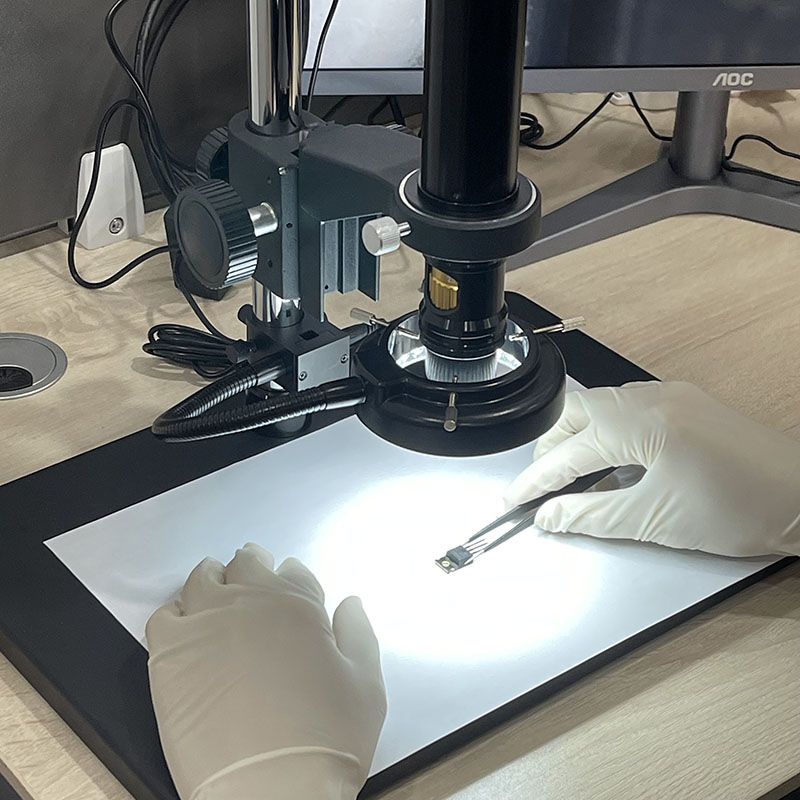 step1: Inspect Products
step1: Inspect Products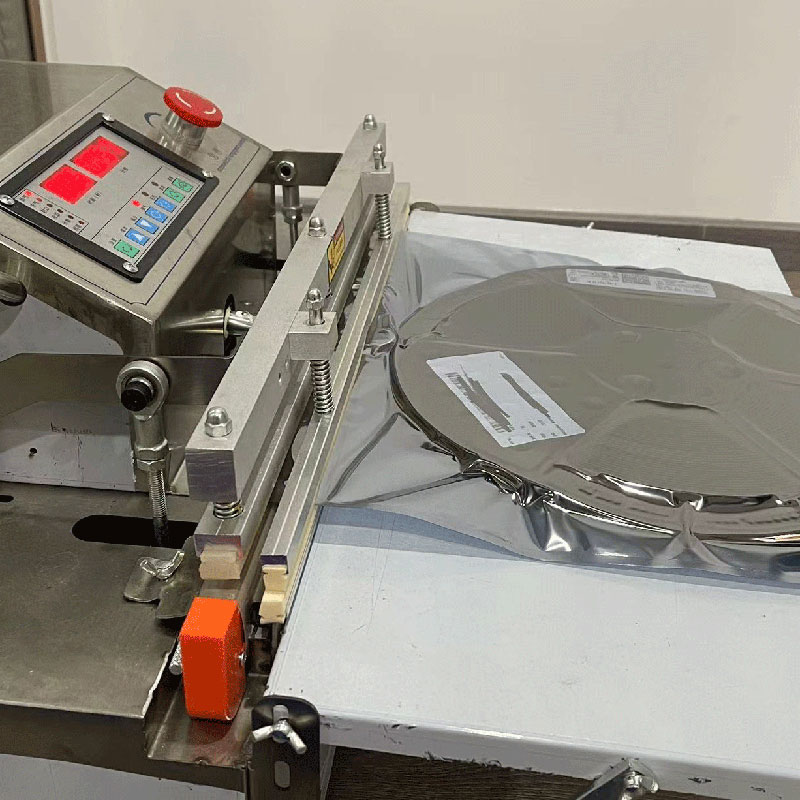 step2: Vacuum Packaging
step2: Vacuum Packaging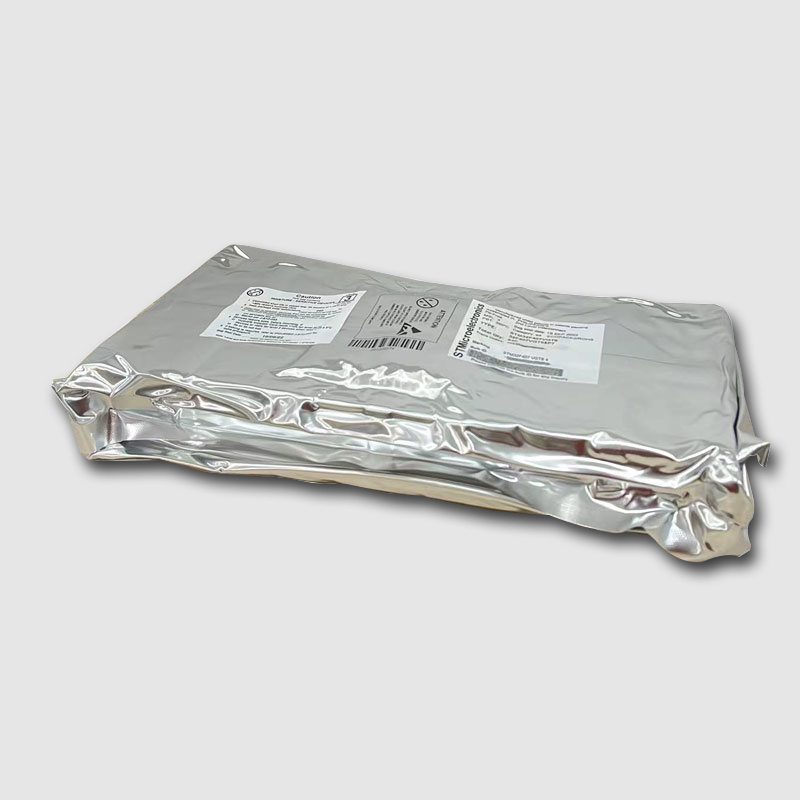 step3: Anti-Static Bag
step3: Anti-Static Bag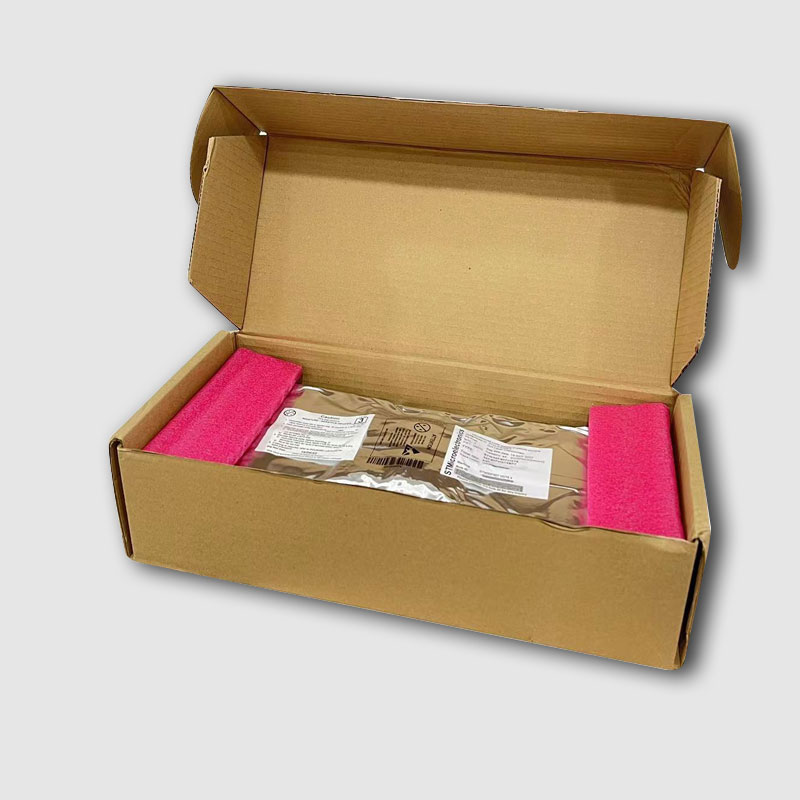 step4: Individual Packing
step4: Individual Packing step5: Packing Box
step5: Packing Box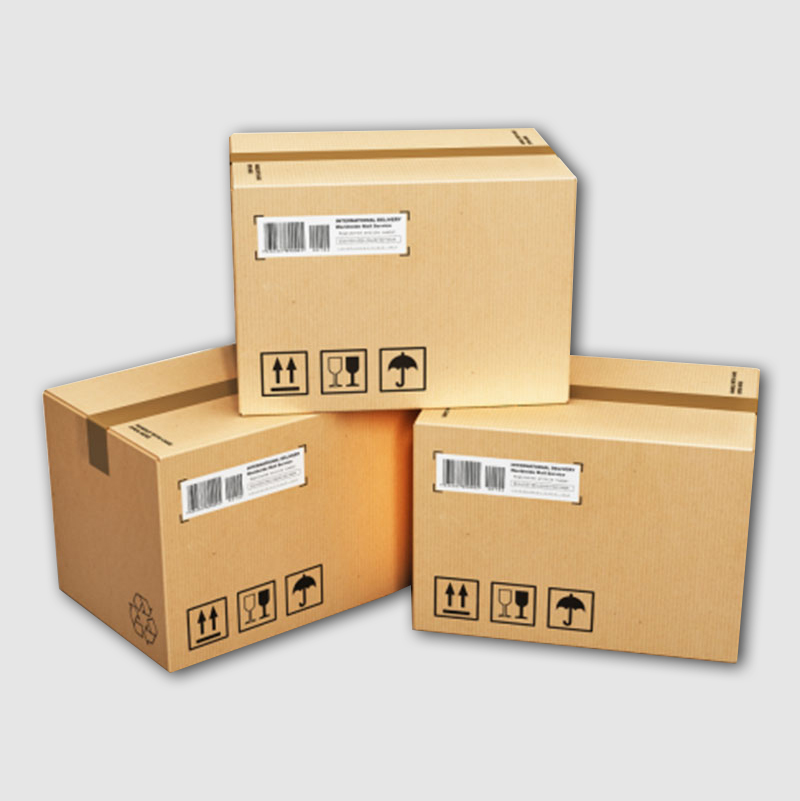 step6:Shipping Tag
step6:Shipping Tag

- Before shipping, we will inspect the parts to ensure it in good condition and check that the parts are brand-new and original with the datasheet. And then, all the products will be packed in an anti-static bag.
- After ensuring that there are no issues with any of the goods after packing, we will wrap them carefully and send them by international express. It demonstrates exceptional seal integrity, outstanding tear and puncture resistance, and both.

Xilinx is a leading provider of programmable logic devices and associated technologies. As a top producer of programmable FPGAs, SoCs, MPSoCs, and 3D ICs, Xilinx has expanded quickly. Software defined and hardware optimized applications are supported by Xilinx, advancing the fields of cloud computing, SDN/NFV, video/vision, industrial IoT, and 5G wireless.
One of Xilinx's key innovations is the development of the Xilinx Vivado Design Suite, a comprehensive software toolchain used for designing and programming their FPGAs and SoCs. This suite provides developers with the necessary tools to create, simulate, and implement their designs on Xilinx devices.
In October 2020, Xilinx was acquired by Advanced Micro Devices (AMD), a major player in the semiconductor industry. This acquisition has enabled AMD to enhance its product portfolio and expand its offerings into the rapidly growing FPGA market.
- Ultra-low power consumption of STM32U575/585 microcontrollers(MCU)
- The STM32U575/585 microcontrollers (MCU) are based on the high-performance Arm 32-bit Cortex‑M33CPU with Arm TrustZone and FPU.
- TI(Texas Instruments)Advanced Ultrasonic Lens Cleaning Chipset Enables Self-Cleaning Cameras and Sensors
- Computer vision and advanced imaging have enabled many revolutionary technologies, one of the most important being Advanced Driver Assistance Systems (ADAS) and autonomous vehicles.
- The Best Guide to Transistor
- The transistor is electronic equipment. It is made through a p and n-type semiconductor. When a semiconductor is placed in the center between the same type of semiconductors the arrangement is called transistors.
- Electronic Component Symbols: Resistor, Capacitor, Transformers and Connectors
- Electronic components are components of electronic components and small machines and instruments. They are often composed of several parts and can be used in similar products.
- Basic Information about Temperature Sensor
- A temperature transducer is a sensor that can sense temperature and convert it into a usable output signal. The temperature sensor is the core part of the temperature measuring instrument, and there are many varieties. After entering the 21st century, temperature sensors are rapidly developing towards high-tech directions such as high precision, multi-function, bus standardization, high reliability and safety, development of virtual sensors and network sensors, and development of single-chip temperature measurement systems. The bus technology of the temperature sensor has also been standardized, and it can be used as a slave to communicate with the host through a dedicated bus interface. According to the measurement method, it can be divided into two categories: a contact type and a non-contact type. According to the characteristics of sensor materials and electronic components, it can be divided into two types: thermal resistance and thermocouple. Main Category The detection part of the contact temperature sensor is in good contact with the measured object, also known as a thermometer. The thermometer achieves heat balance through conduction or convection so that the indication value of the thermometer can directly represent the temperature of the measured object. Generally, the measurement accuracy is high. Within a certain temperature range, the thermometer can also measure the temperature distribution inside the object. However, large measurement errors will occur for moving bodies, small targets, or objects with small heat capacity. Commonly used thermometers include bimetallic thermometers, liquid-in-glass thermometers, pressure thermometers, resistance thermometers, thermistors, and thermocouples. They are widely used in industry, agriculture, commerce, and other sectors. People also often use these thermometers in daily life. With the wide application of cryogenic technology in national defense engineering, space technology, metallurgy, electronics, food, medicine, petrochemical, and other departments and the research of superconducting technology, cryogenic thermometers for measuring temperatures below 120K have been developed, such as cryogenic gas thermometers, steam Pressure thermometers, acoustic thermometers, paramagnetic salt thermometers, quantum thermometers, low-temperature thermal resistance, and low-temperature thermocouples, etc. Cryogenic thermometers require small temperature sensing elements, high accuracy, good reproducibility, and stability. The carburized glass thermal resistance made of porous high silica glass carburized and sintered is a kind of temperature sensing element of the low-temperature thermometer, which can be used to measure the temperature in the range of 1.6 ~ 300K. Its sensitive components are not in contact with the measured object, also known as a non-contact temperature measuring instrument. This instrument can be used to measure the surface temperature of moving objects, small targets, and objects with small heat capacity or rapid temperature changes (transient), and can also be used to measure the temperature distribution of the temperature field. The most commonly used non-contact thermometers are based on the fundamental law of black body radiation and are called radiation thermometers. Radiation thermometry methods include the brightness method (see optical pyrometer), radiation method (see radiation pyrometer), and colorimetric method (see colorimetric thermometer). All kinds of radiation temperature measurement methods can only measure the corresponding photometric temperature, radiation temperature, or colorimetric temperature. Only the temperature measured for a black body (an object that absorbs all radiation and does not reflect light) is the true temperature. If you want to measure the real temperature of the object, you must correct the surface emissivity of the material. However, the surface emissivity of materials depends not only on temperature and wavelength, but also on surface state, coating film, and microstructure, so it is difficult to measure accurately. In automatic production, it is often necessary to use radiation thermometry to measure or control the surface temperature of certain objects, such as the steel strip rolling temperature, roll temperature, forging temperature in metallurgy, and the temperature of various molten metals in smelting furnaces or crucibles. In these specific cases, the measurement of the emissivity of an object's surface is quite difficult. For automatic measurement and control of solid surface temperature, an additional reflector can be used to form a black body cavity together with the measured surface. The effect of additional radiation can increase the effective radiation and effective emissivity of the measured surface. Use the effective emissivity coefficient to correct the measured temperature through the instrument, and finally get the real temperature of the measured surface. The most typical additional mirror is hemispherical. The diffuse radiation on the measured surface near the center of the sphere can be reflected on the surface by the hemispherical mirror to form additional radiation, thereby increasing the effective emissivity coefficient. In the formula, ε is the surface emissivity of the material, and ρ is the reflectivity of the mirror. As for the radiation measurement of the real temperature of the gas and liquid medium, the method of inserting the heat-resistant material tube to a certain depth to form a black body cavity can be used. The effective emission coefficient of the cylinder cavity after reaching thermal equilibrium with the medium is obtained by calculation. In automatic measurement and control, this value can be used to correct the measured cavity bottom temperature (ie medium temperature) to obtain the real temperature of the medium. Advantages of non-contact temperature measurement: the upper limit of measurement is not limited by the temperature resistance of the temperature sensing element, so there is no limit to the maximum measurable temperature in principle. For high temperatures above 1800°C, non-contact temperature measurement methods are mainly used. With the development of infrared technology, radiation temperature measurement has gradually expanded from visible light to infrared and has been used below 700°C to room temperature with high resolution. Working principle Metals undergo a corresponding extension when the ambient temperature changes, so the sensor can signal this response in different ways. Bimetal Sensor A bimetal sheet is composed of two pieces of metal with different expansion coefficients attached. As the temperature changes, material A expands more than the other metal, causing the metal sheet to bend. The curvature of the bend can be converted into an output signal. Bimetal Rod and Tube Sensors As the temperature increases, the length of the metal tube (material A) increases, while the length of the non-expanding steel rod (metal B) does not increase so that the linear expansion of the metal tube can be transmitted due to the change of position. In turn, this linear expansion can be translated into an output signal. Deformation Curve Design Sensors for Liquids and Gases When the temperature changes, liquids, and gases will also produce corresponding changes in volume. Various types of structures can convert this change in expansion into a change in position, thus producing a position change output (potentiometer, sense bias, baffle, etc.). Resistance sensing As the temperature of the metal changes, its resistance value also changes. For different metals, every time the temperature changes by one degree, the resistance value changes differently, and the resistance value can be directly used as an output signal. There are two types of changes in resistance positive temperature coefficient Increased temperature = increased resistance A decrease in temperature = a decrease in resistance negative temperature coefficient Increased temperature = decreased resistance Decrease in temperature = increase in resistance Thermocouple Sensing A thermocouple consists of two metal wires of different materials welded together at the ends. Then measure the ambient temperature of the non-heating part, and the temperature of the heating point can be accurately known. Since it must have two conductors of different materials, it is called a thermocouple. Thermocouples made of different materials are used in different temperature ranges, and their sensitivities also vary. The sensitivity of the thermocouple refers to the change in the output potential difference when the temperature of the heating point changes by 1 °C. For most thermocouples supported by metallic materials, this value is between 5 and 40 microvolts/°C. Since the sensitivity of the thermocouple temperature sensor has nothing to do with the thickness of the material, it can also be made into a temperature sensor with very thin materials. Also due to the good ductility of the metal material used to make thermocouples, this tiny temperature-measuring element has a very high response speed and can measure rapidly changing processes. Selection method If you want to make reliable temperature measurements, you first need to choose the correct temperature instrument, that is, the temperature sensor. Among them, thermocouples, thermistors, platinum resistance thermometers (RTDs), and temperature ICs are the most commonly used temperature sensors in testing. The following is an introduction to the characteristics of the thermocouple and thermistor temperature instruments. thermocouple Thermocouples are the most commonly used temperature sensors in temperature measurement. Its main advantages are a wide temperature range and adaptability to various atmospheric environments, and it is strong, low in price, does not require a power supply, and is the cheapest. A thermocouple consists of two wires of dissimilar metals (metal A and metal B) connected at one end. When one end of the thermocouple is heated, there is a potential difference in the thermocouple circuit. The temperature can be calculated from the measured potential difference. However, there is a nonlinear relationship between voltage and temperature. Since the temperature is a nonlinear relationship between voltage and temperature, it is necessary to make a second measurement for the reference temperature (Tref), and use the test equipment software or hardware to process the voltage-temperature conversion inside the instrument, to Finally the thermocouple temperature (Tx), is obtained. Both Agilent34970A and 34980A data collectors have built-in measurement computing capabilities. In short, thermocouples are the simplest and most versatile temperature sensors, but thermocouples are not suitable for high-precision measurements and applications. Thermistors are made of semiconductor materials, and most of them have a negative temperature coefficient, that is, the resistance value decreases with the increase in temperature. Temperature changes will cause large resistance changes, so it is the most sensitive temperature sensor. However, the linearity of the thermistor is extremely poor and has a lot to do with the production process. Manufacturers do not give standardized thermistor curves. Thermistors are very small and respond quickly to changes in temperature. But the thermistor requires a current source, and its small size makes it extremely sensitive to self-heating errors. The thermistor measures absolute temperature on two lines and has better accuracy, but it is more expensive than a thermocouple, and its measurable temperature range is also smaller than that of a thermocouple. A commonly used thermistor has a resistance of 5kΩ at 25°C, and every 1°C temperature change causes a resistance change of 200Ω. Note that the 10Ω lead resistance causes only a negligible 0.05°C error. It is ideal for current control applications requiring fast and sensitive temperature measurements. The small size is advantageous for applications with space requirements, but care must be taken to prevent self-heating errors. Thermistors also have their measurement tricks. The advantage of the thermistor's small size is that it stabilizes quickly without causing a thermal load. However, it is also very weak, and a high current will cause self-heating. Since the thermistor is a resistive device, any current source will generate heat from power across it. Power is equal to the product of the square of the current and the resistance. So use a small current source. Permanent damage will result if the thermistor is exposed to high heat.
- Do you Know BD140 PNP Transistor: Pinout, Datasheet, Features and Applications
- The BD140 is a medium power bipolar junction PNP transistor that is mainly used for audio amplifiers and drivers utilizing complementary or quasi-complementary circuits. It is made up of silicon and comes in the TO-126 package.
















